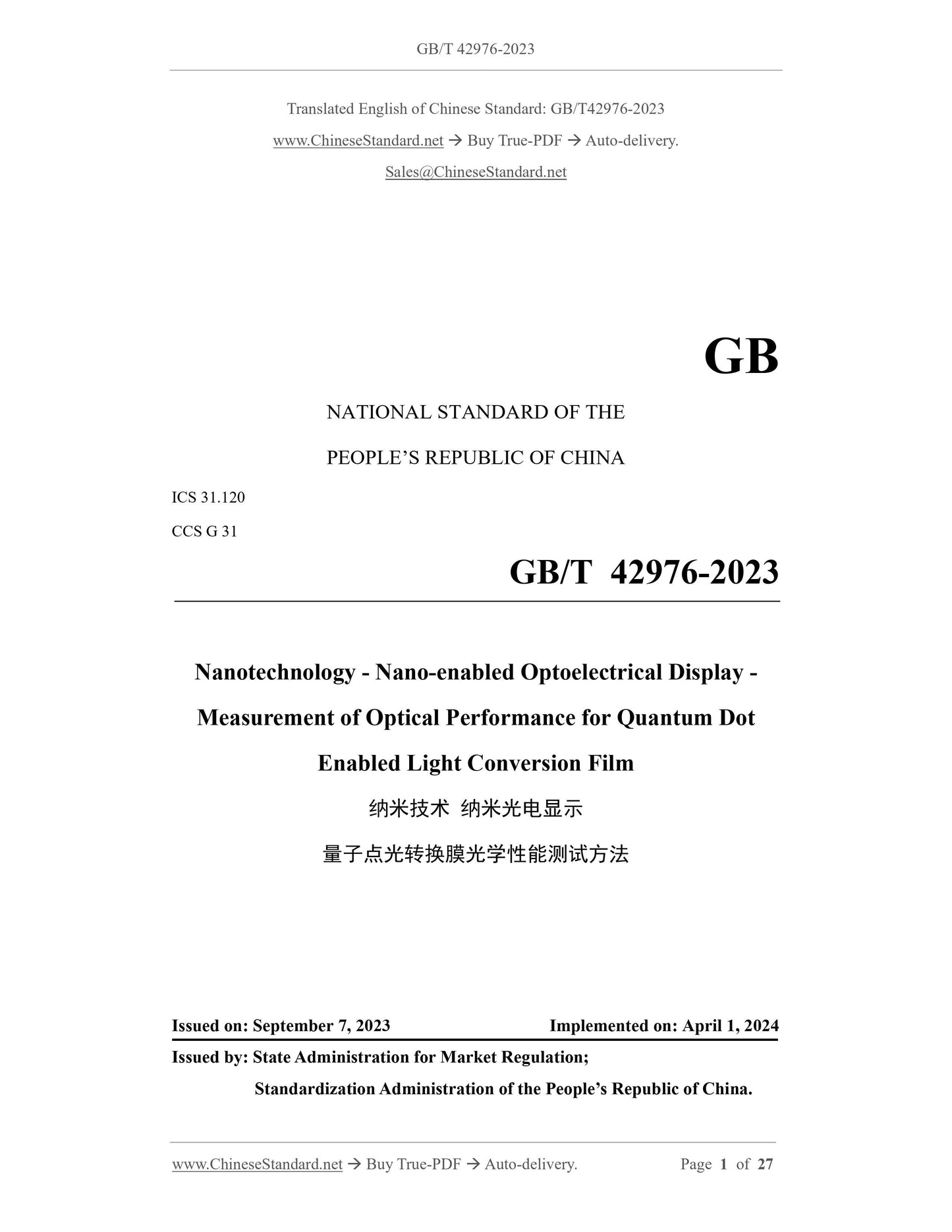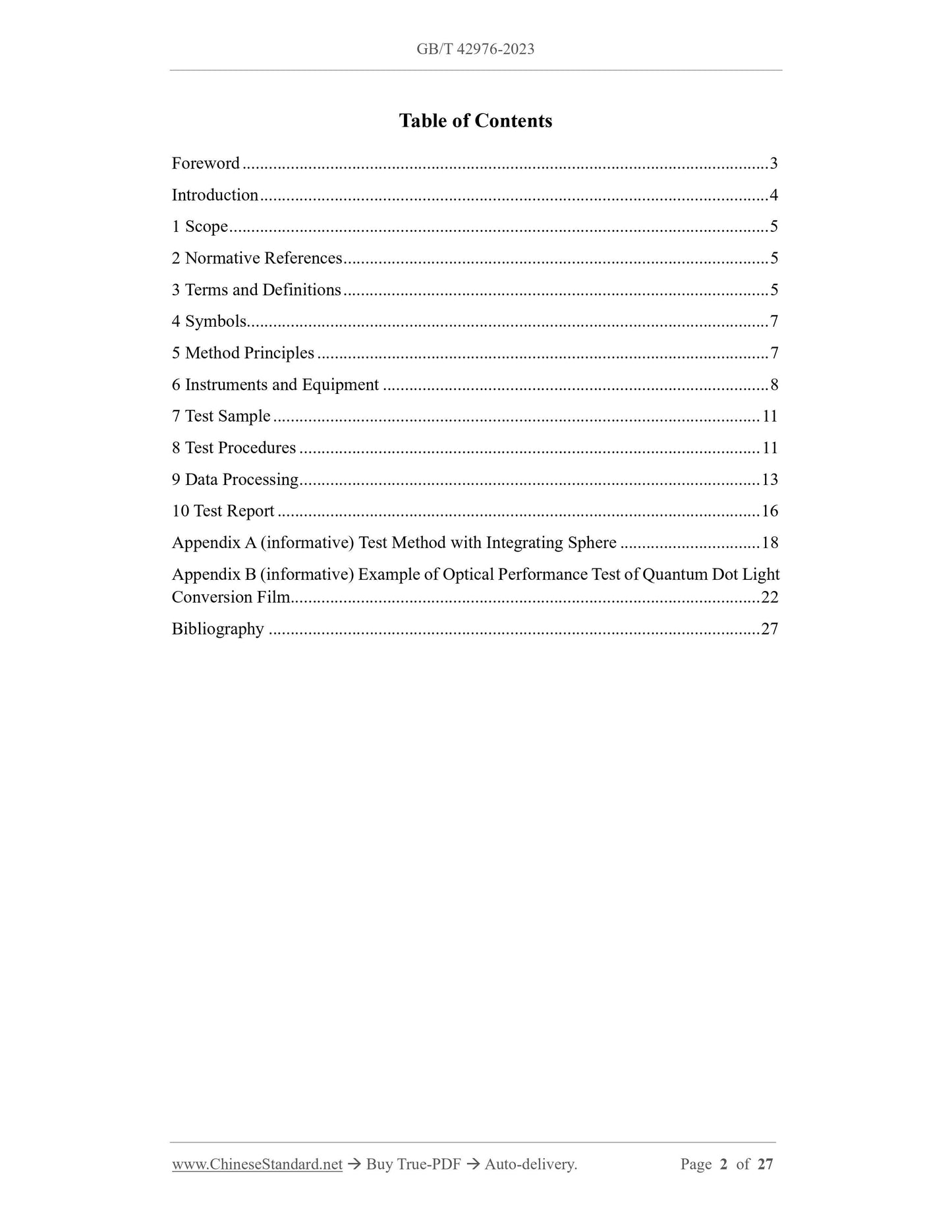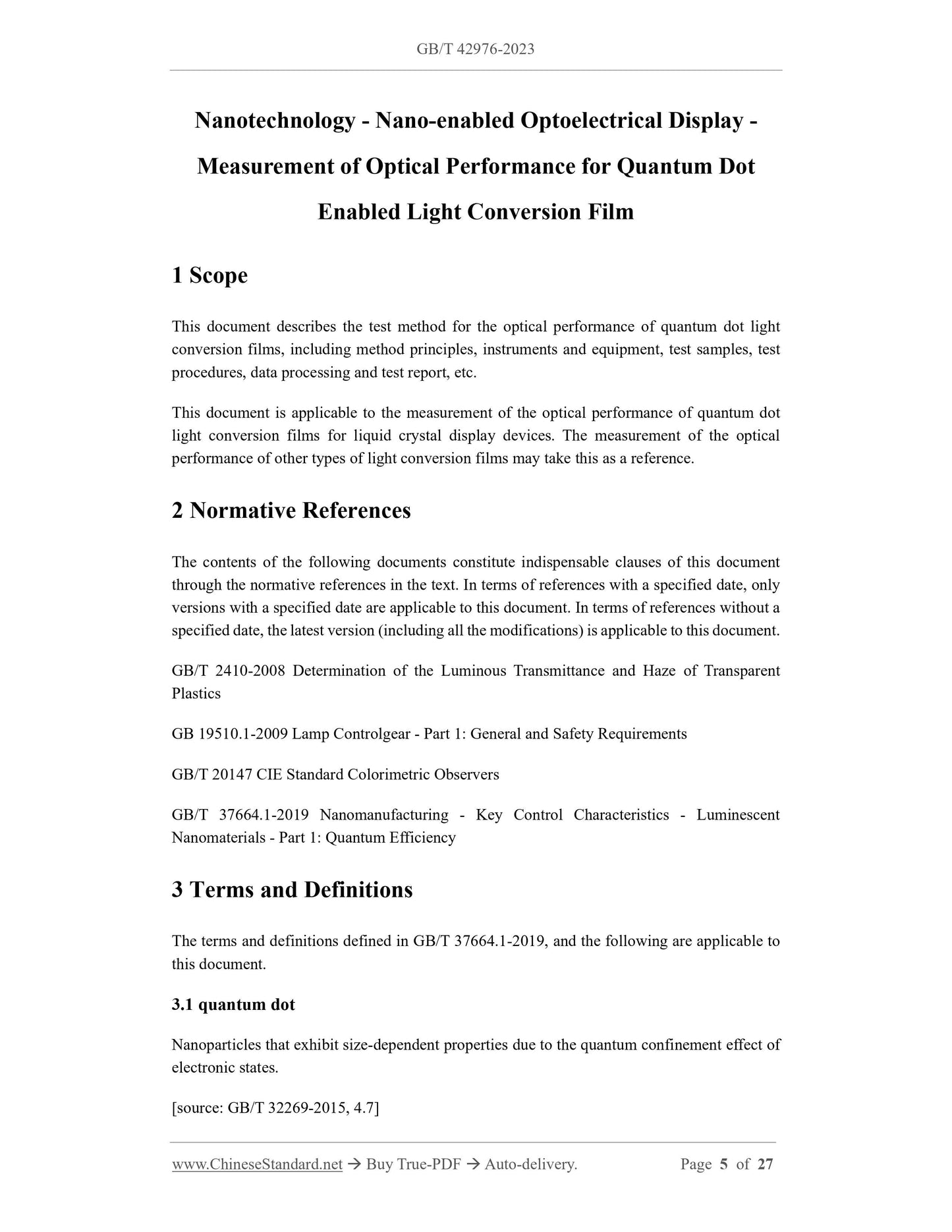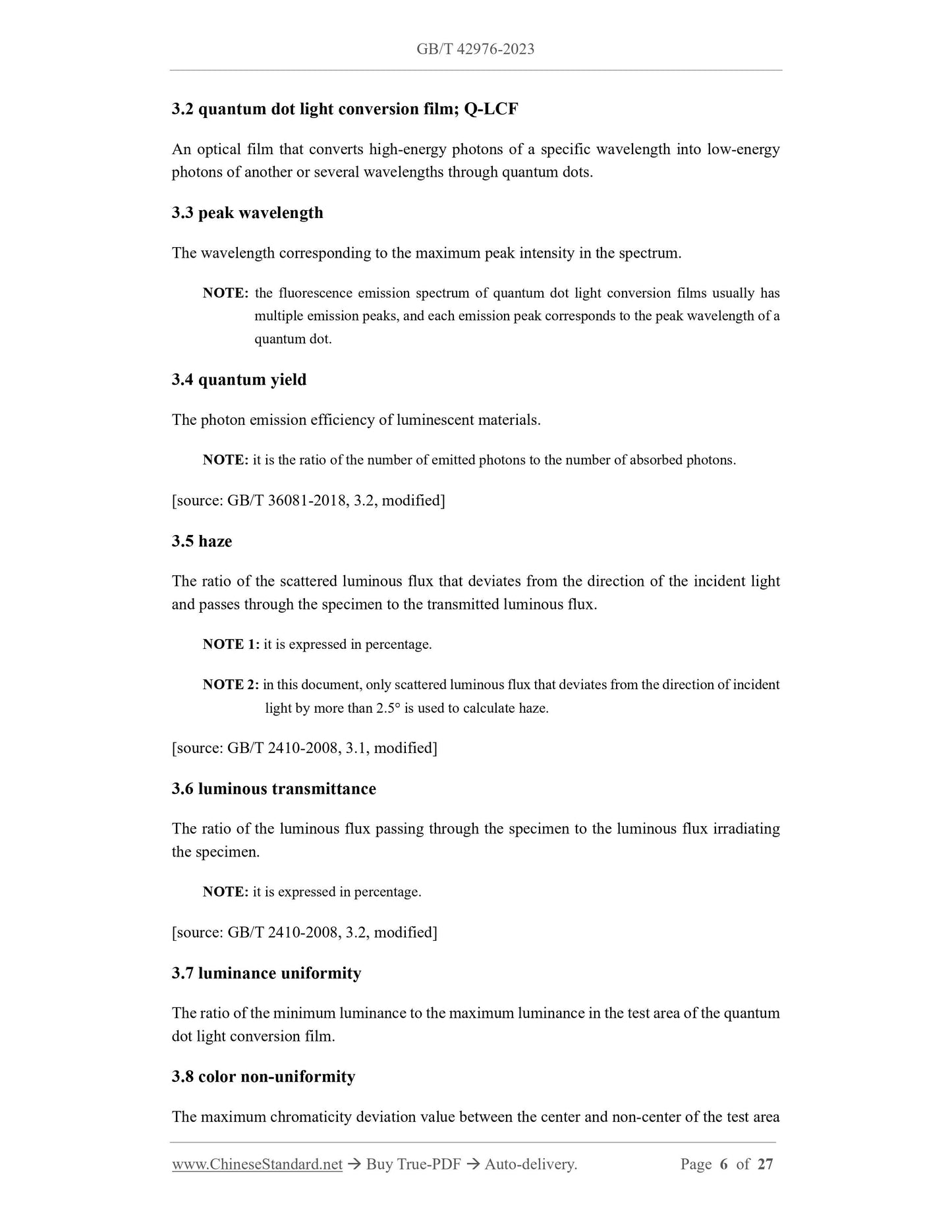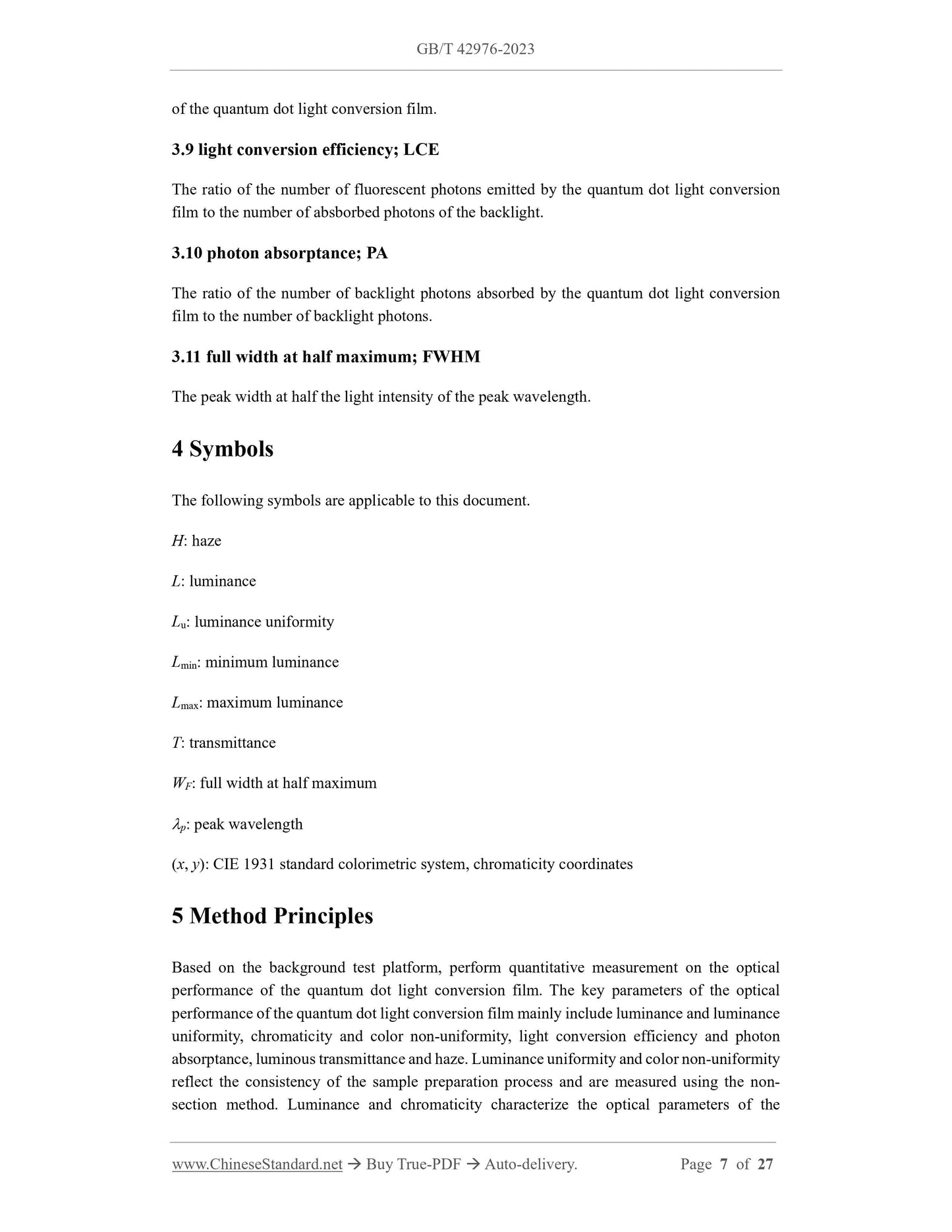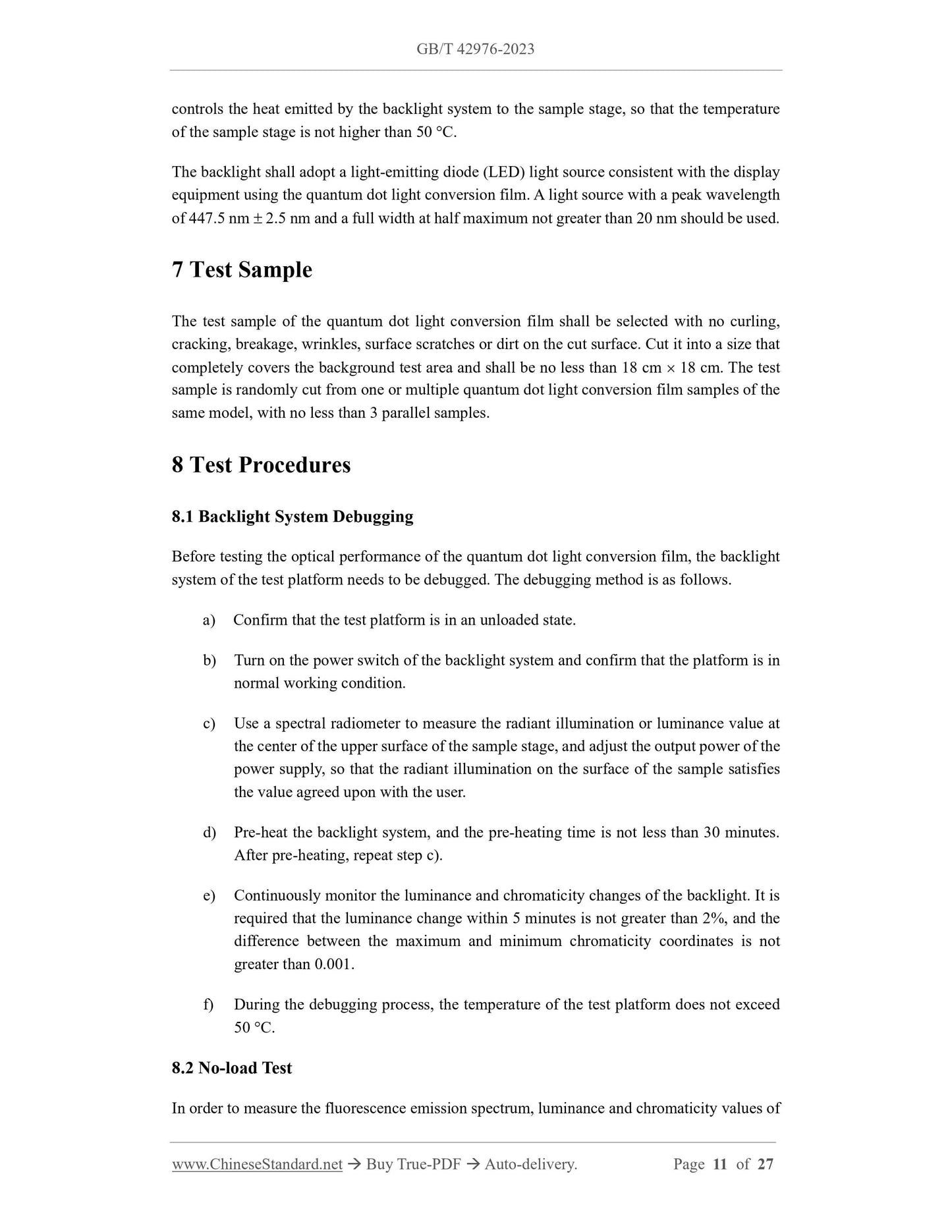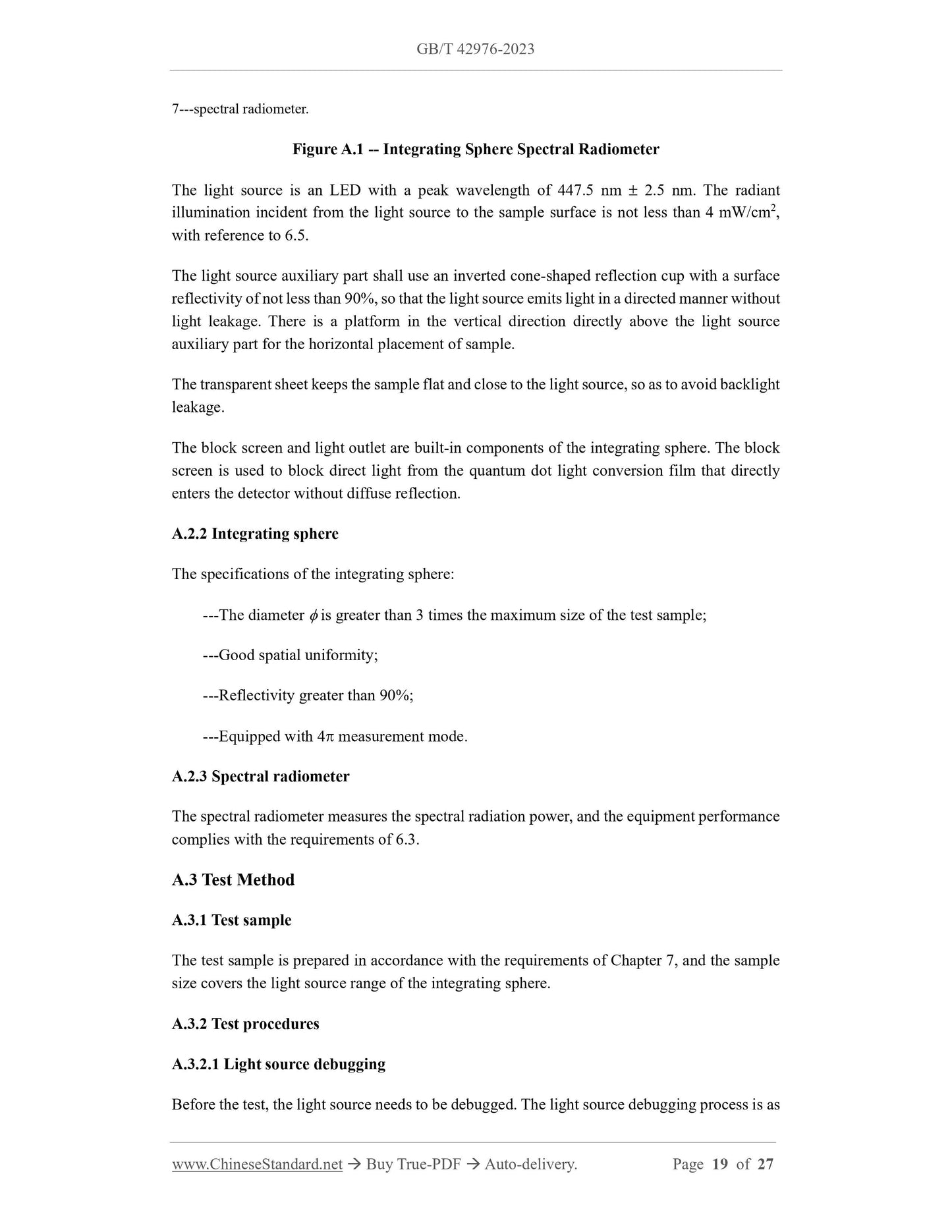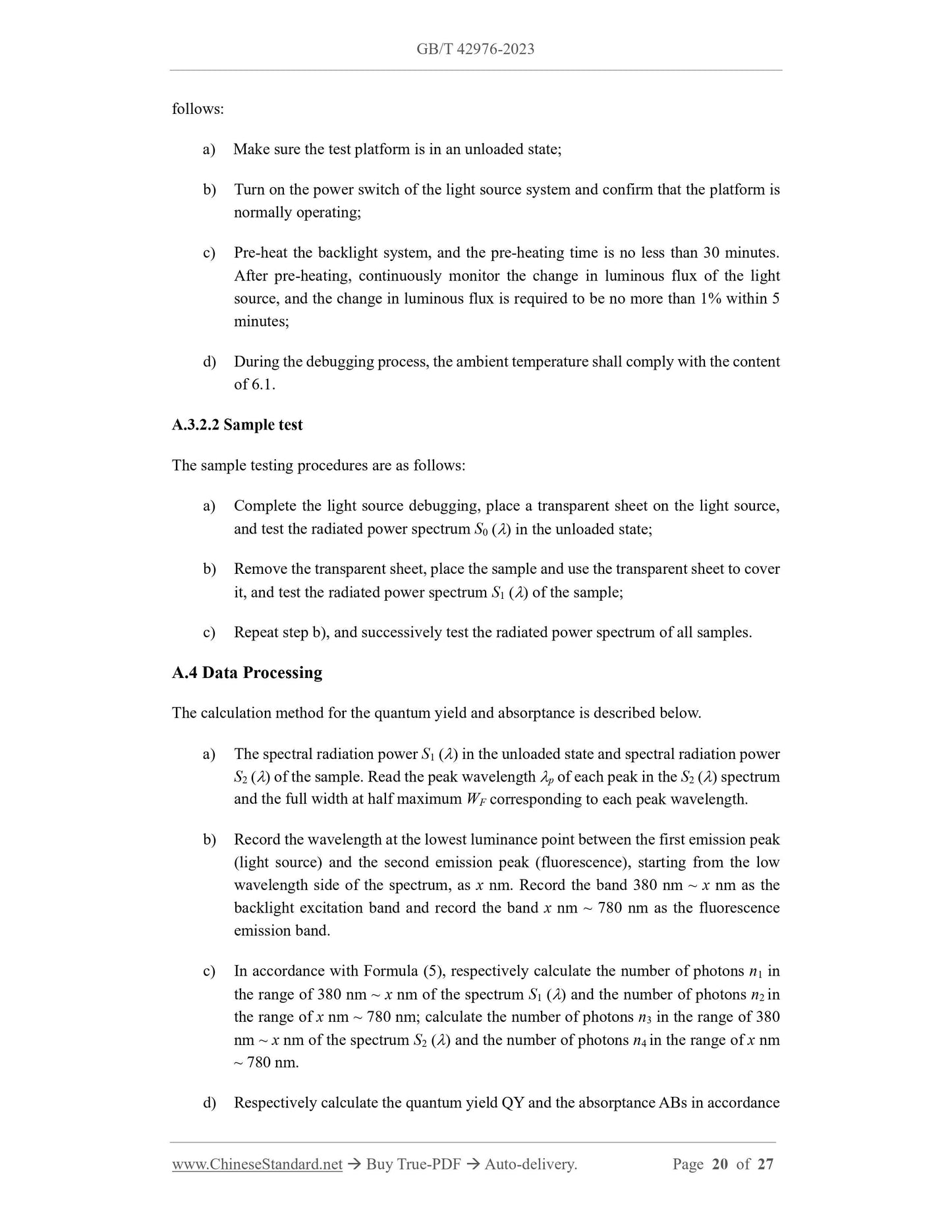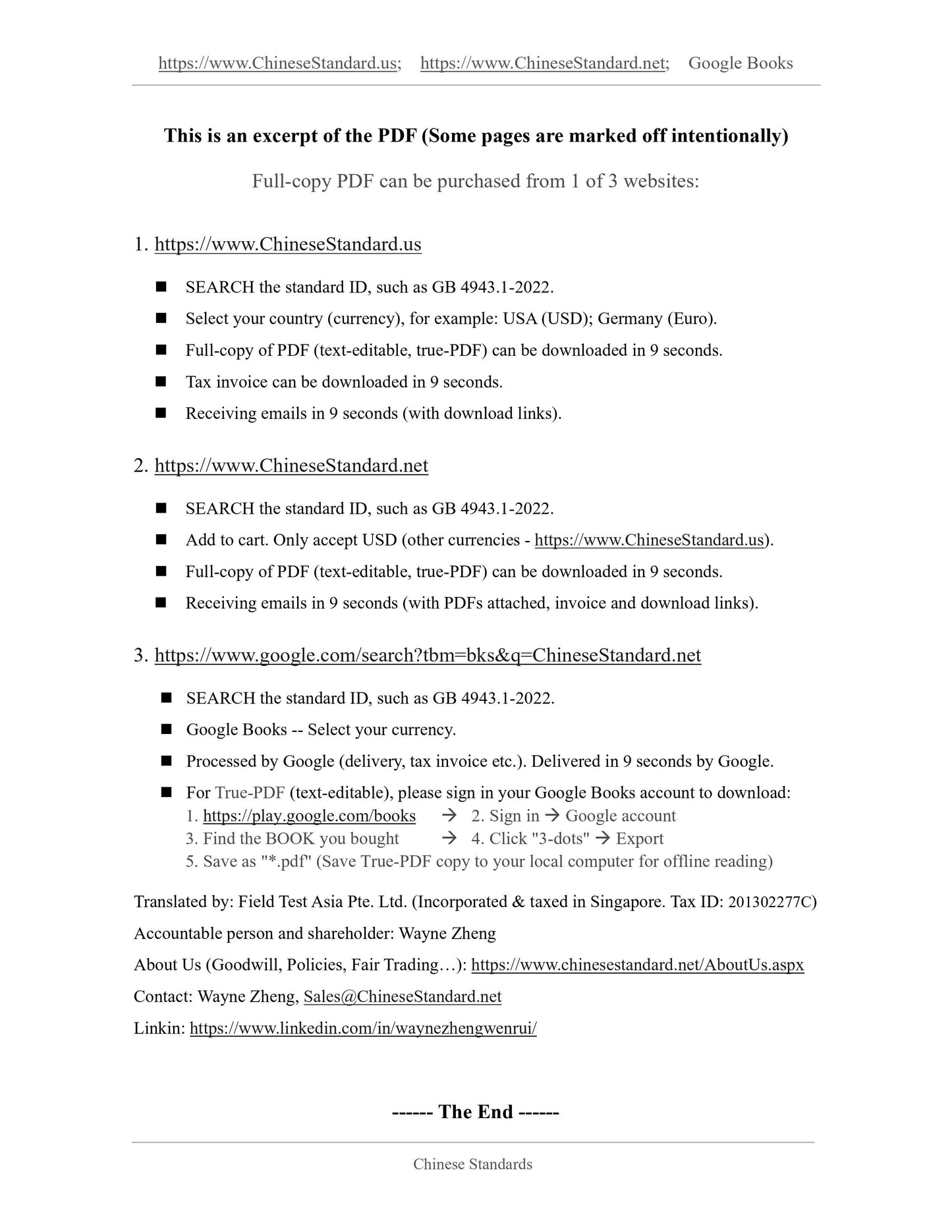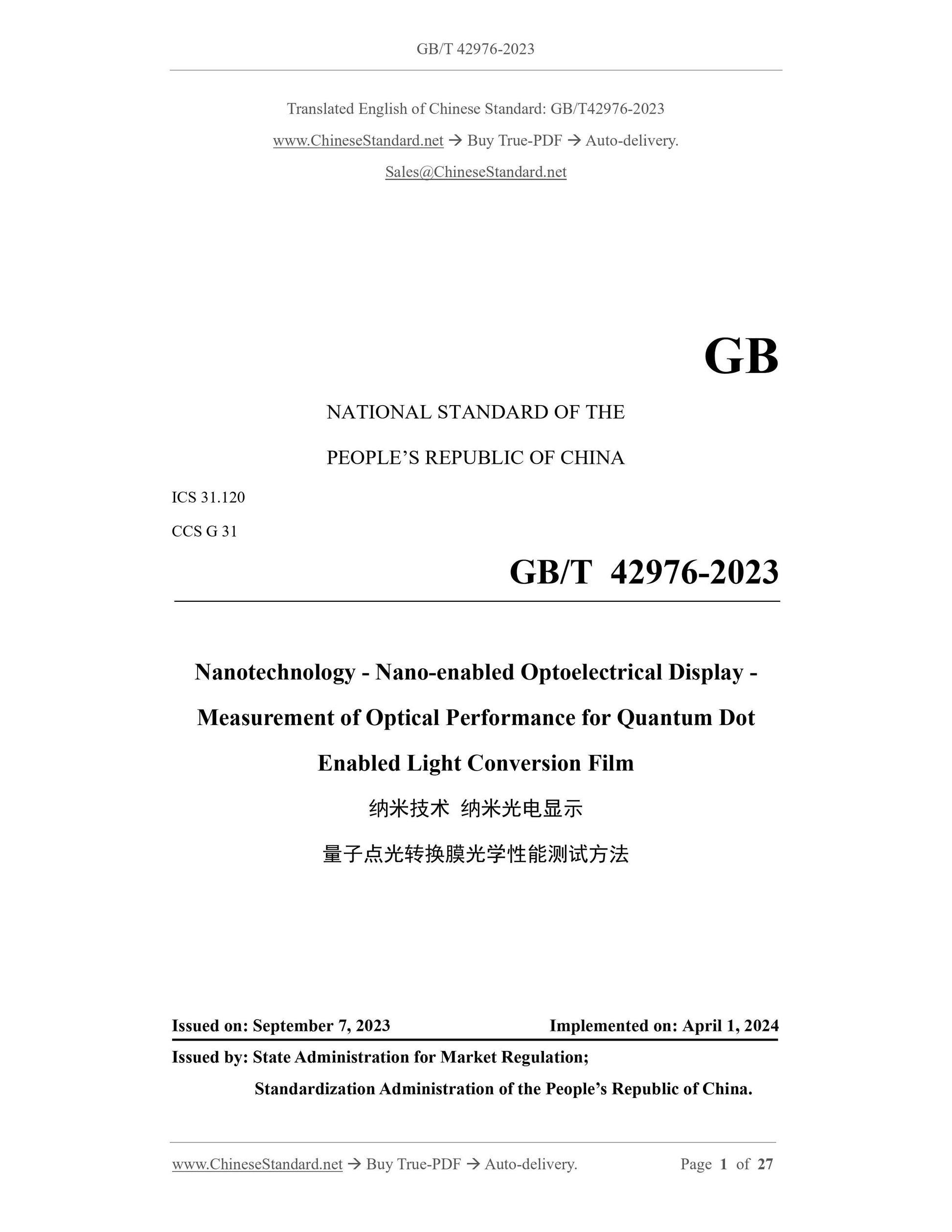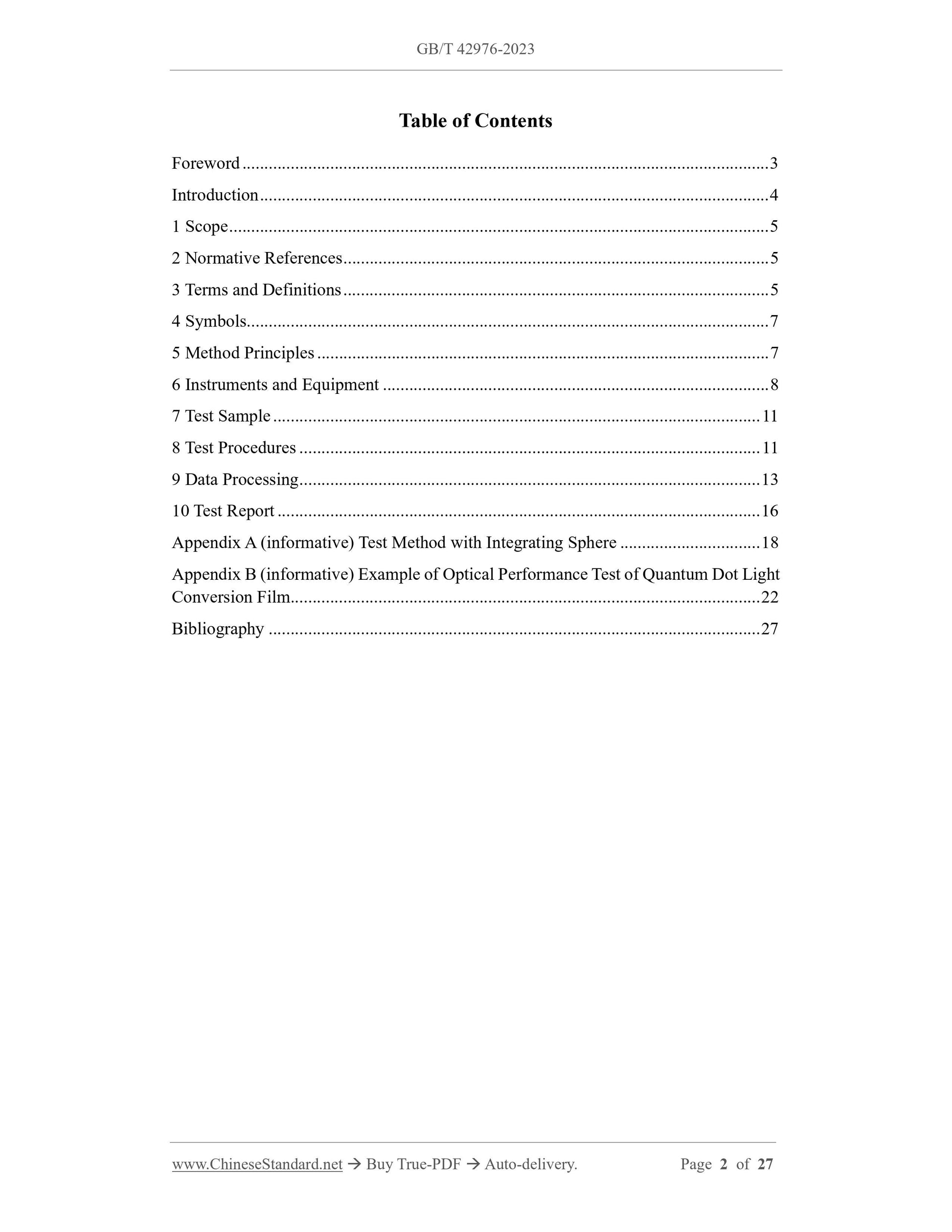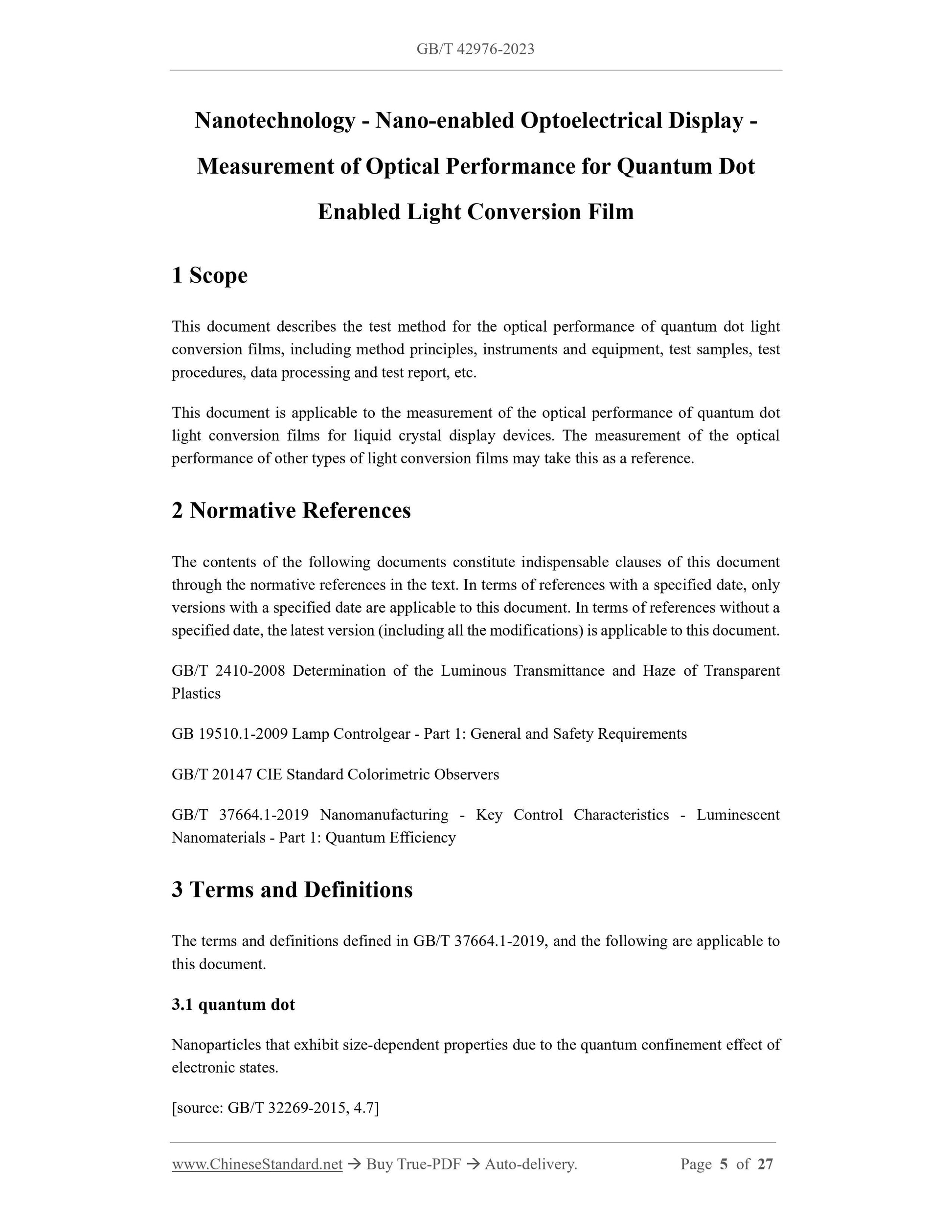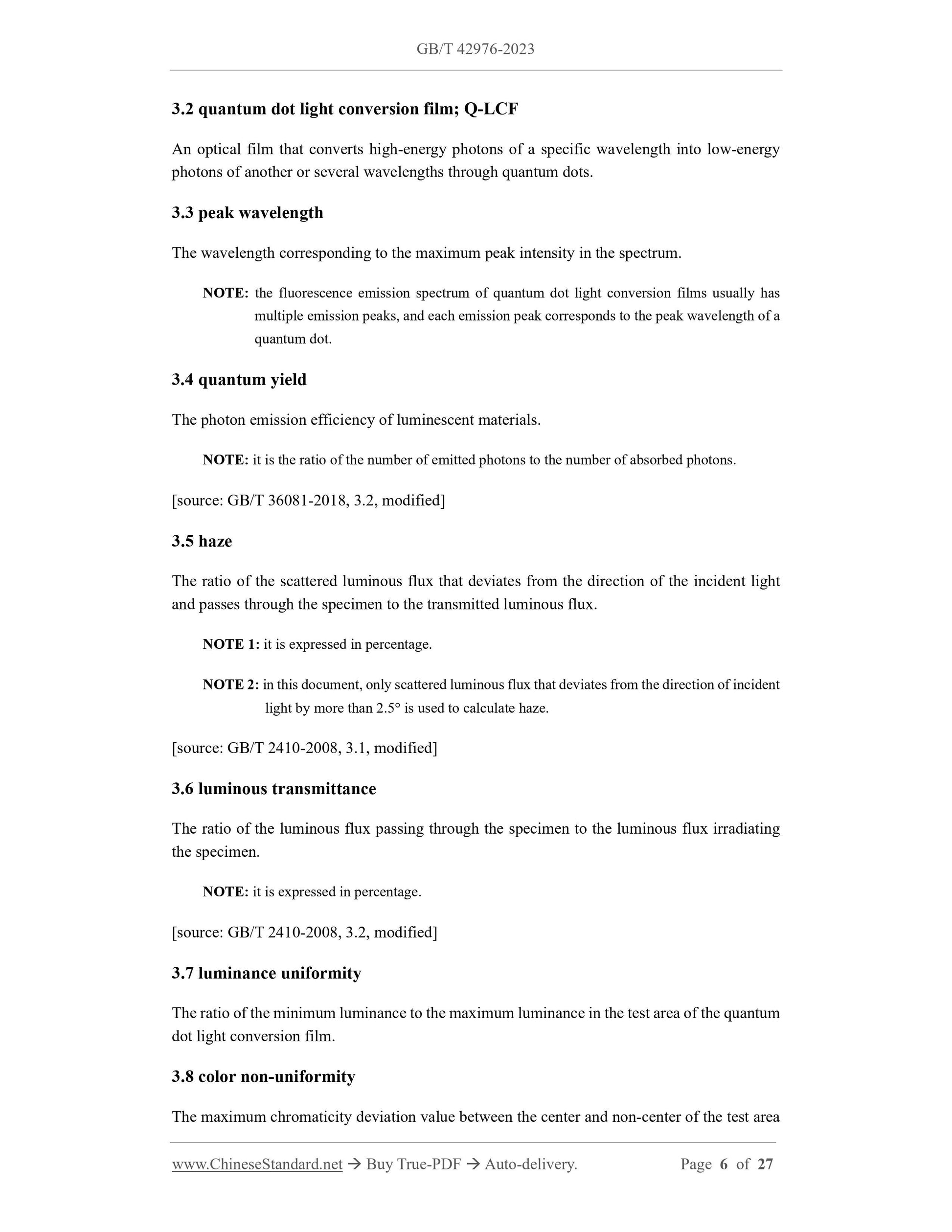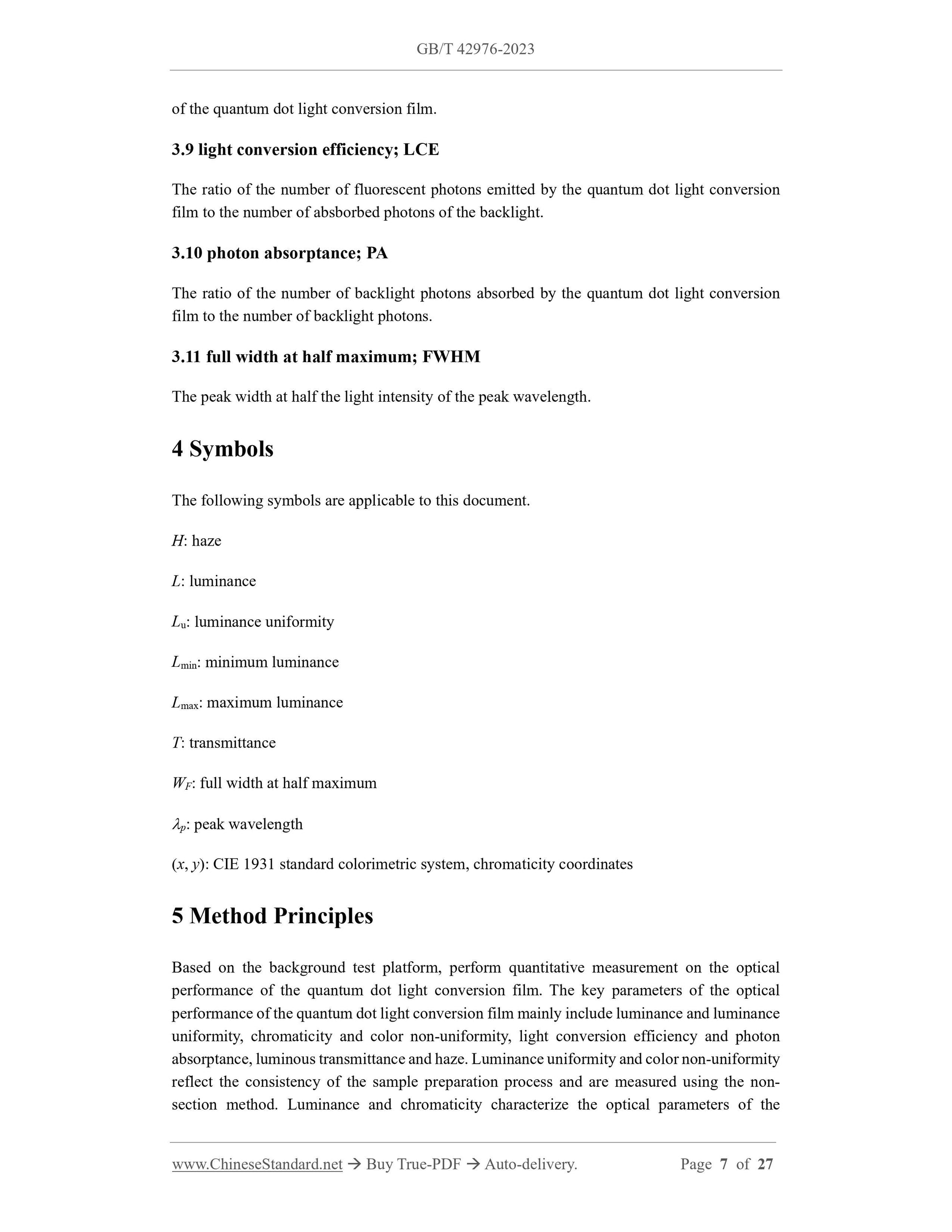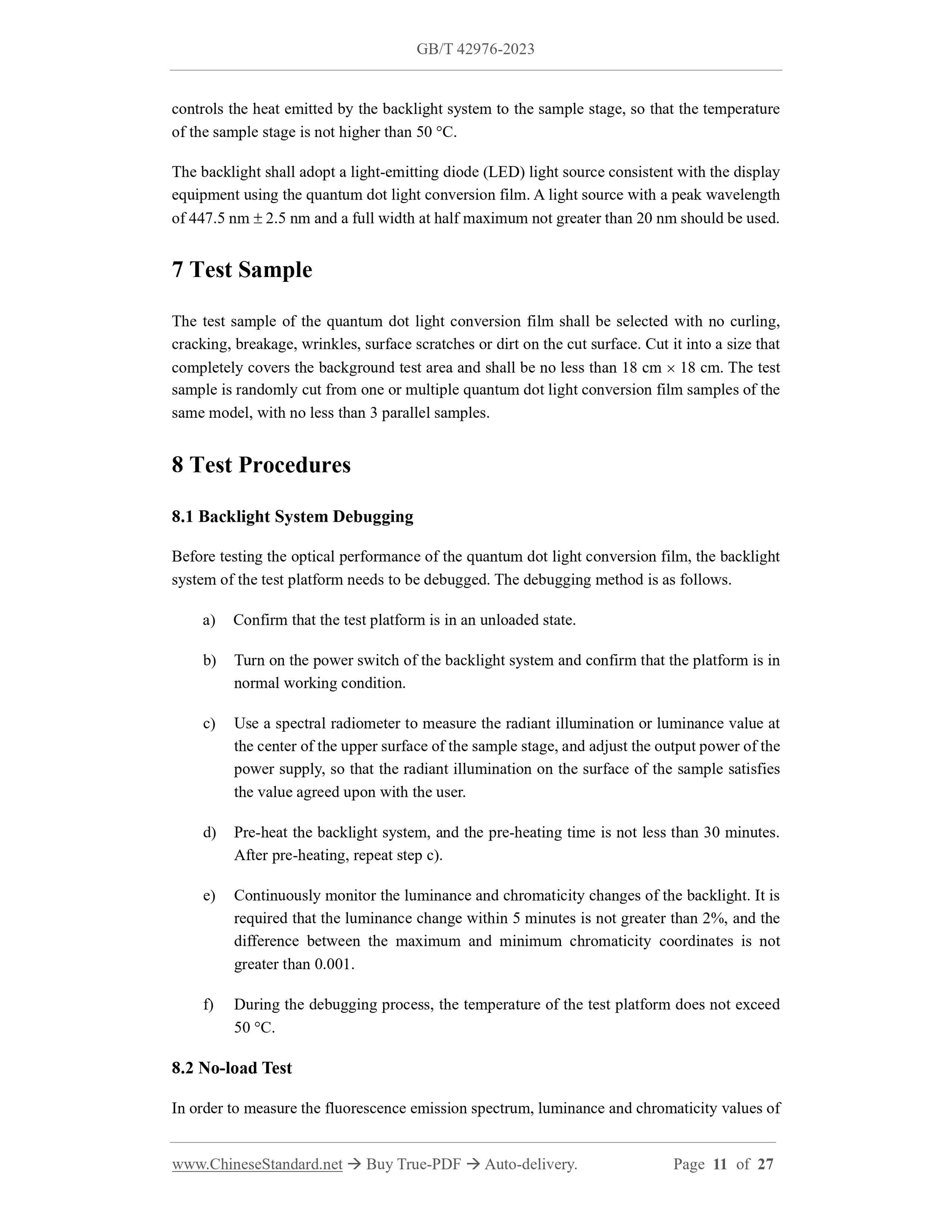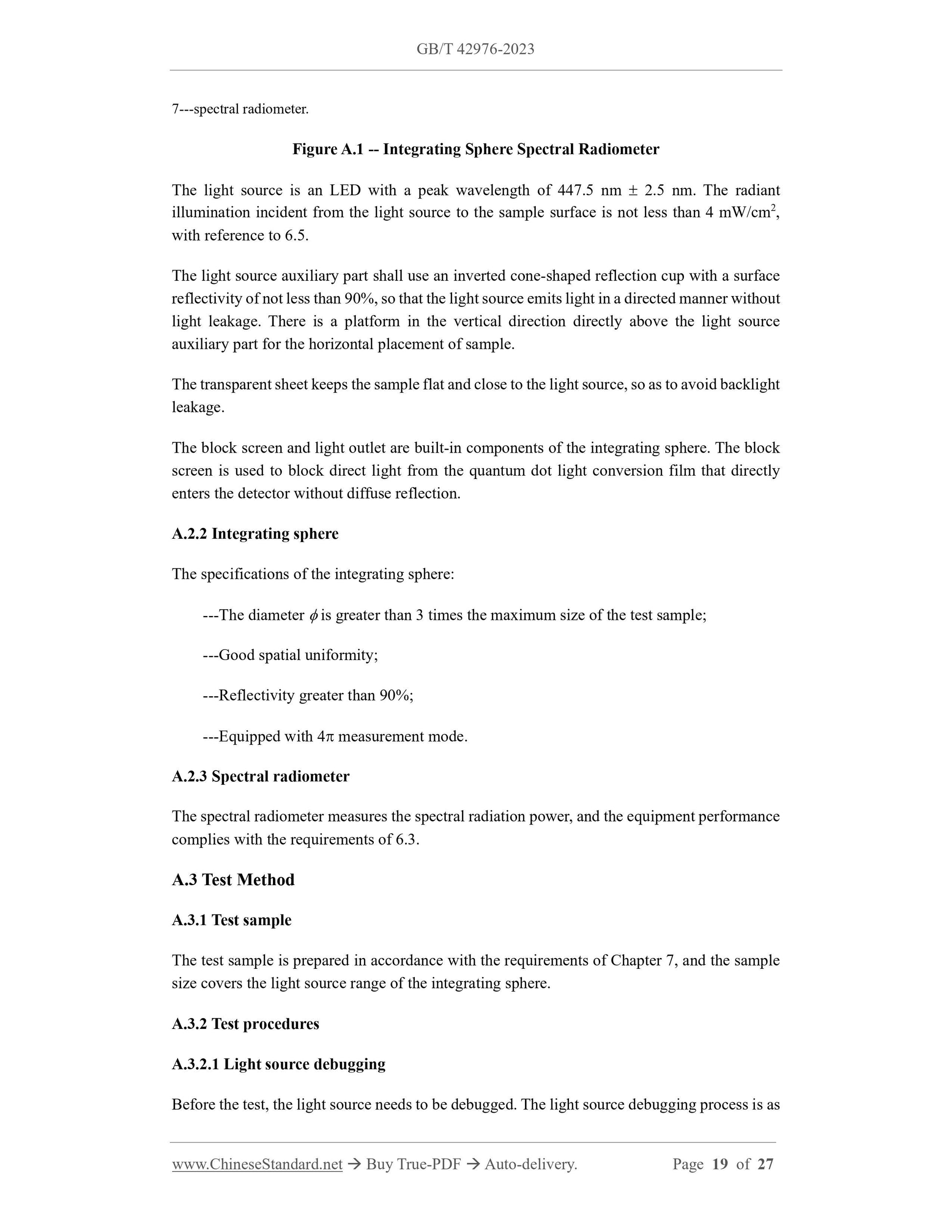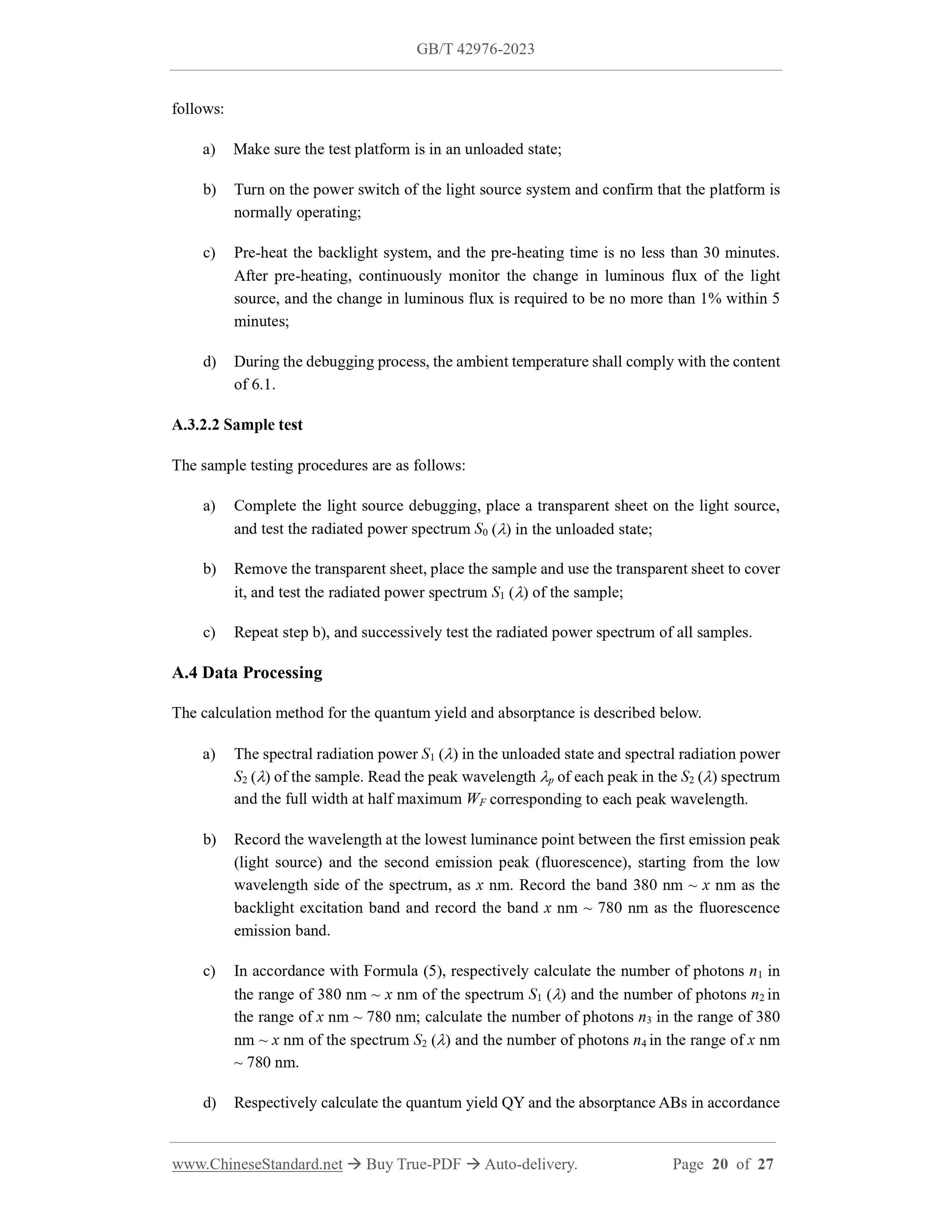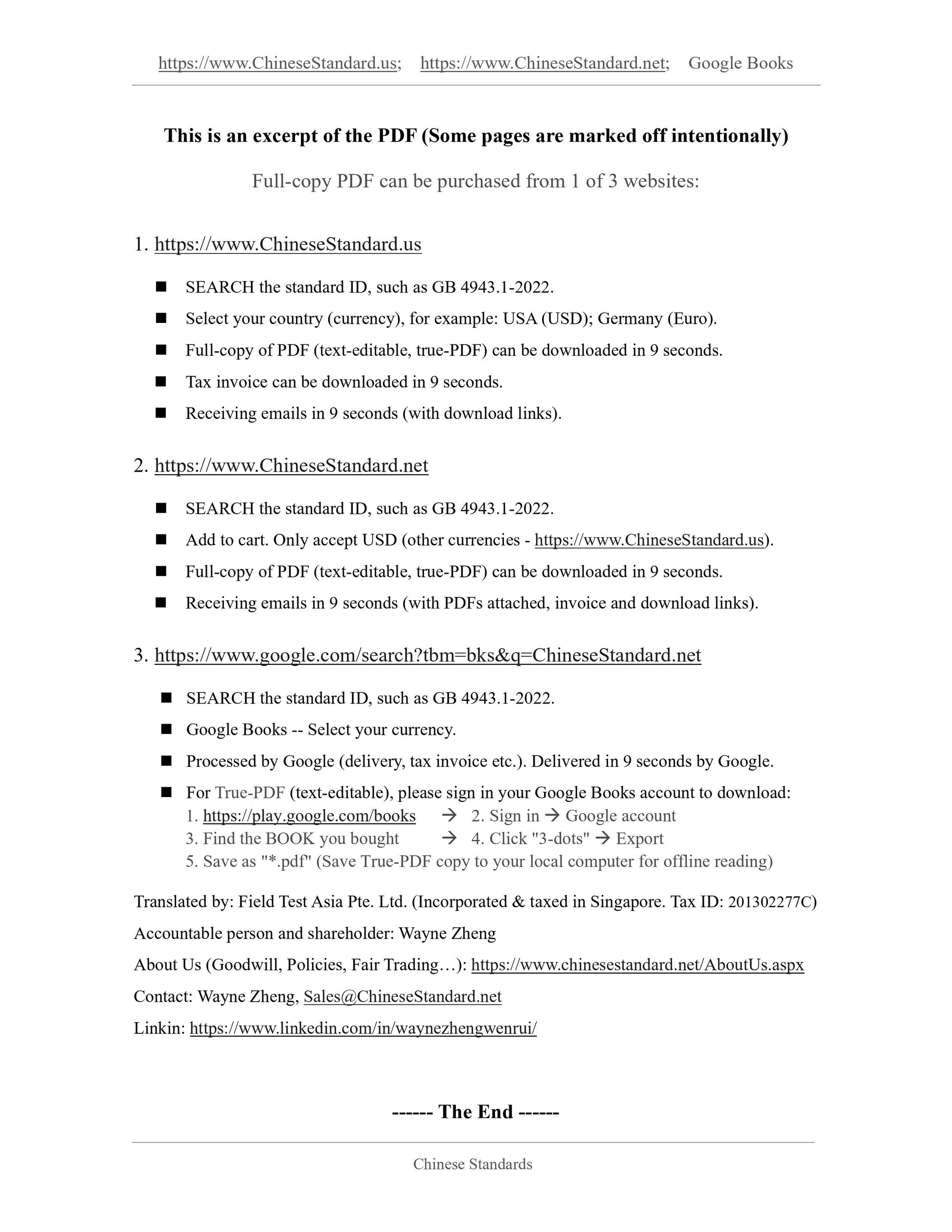1
/
of
9
www.ChineseStandard.us -- Field Test Asia Pte. Ltd.
GB/T 42976-2023 English PDF (GB/T42976-2023)
GB/T 42976-2023 English PDF (GB/T42976-2023)
Regular price
$325.00
Regular price
Sale price
$325.00
Unit price
/
per
Shipping calculated at checkout.
Couldn't load pickup availability
GB/T 42976-2023: Nanotechnology - Nano-enabled optoelectrical display - Measurement of optical performance for quantum dot enabled light conversion film
Delivery: 9 seconds. Download (and Email) true-PDF + Invoice.Get Quotation: Click GB/T 42976-2023 (Self-service in 1-minute)
Newer / historical versions: GB/T 42976-2023
Preview True-PDF
Scope
This document describes the test method for the optical performance of quantum dot lightconversion films, including method principles, instruments and equipment, test samples, test
procedures, data processing and test report, etc.
This document is applicable to the measurement of the optical performance of quantum dot
light conversion films for liquid crystal display devices. The measurement of the optical
performance of other types of light conversion films may take this as a reference.
Basic Data
| Standard ID | GB/T 42976-2023 (GB/T42976-2023) |
| Description (Translated English) | Nanotechnology - Nano-enabled optoelectrical display - Measurement of optical performance for quantum dot enabled light conversion film |
| Sector / Industry | National Standard (Recommended) |
| Classification of Chinese Standard | G31 |
| Classification of International Standard | 31.120 |
| Word Count Estimation | 23,253 |
| Date of Issue | 2023-09-07 |
| Date of Implementation | 2024-04-01 |
| Issuing agency(ies) | State Administration for Market Regulation, China National Standardization Administration |
Share
